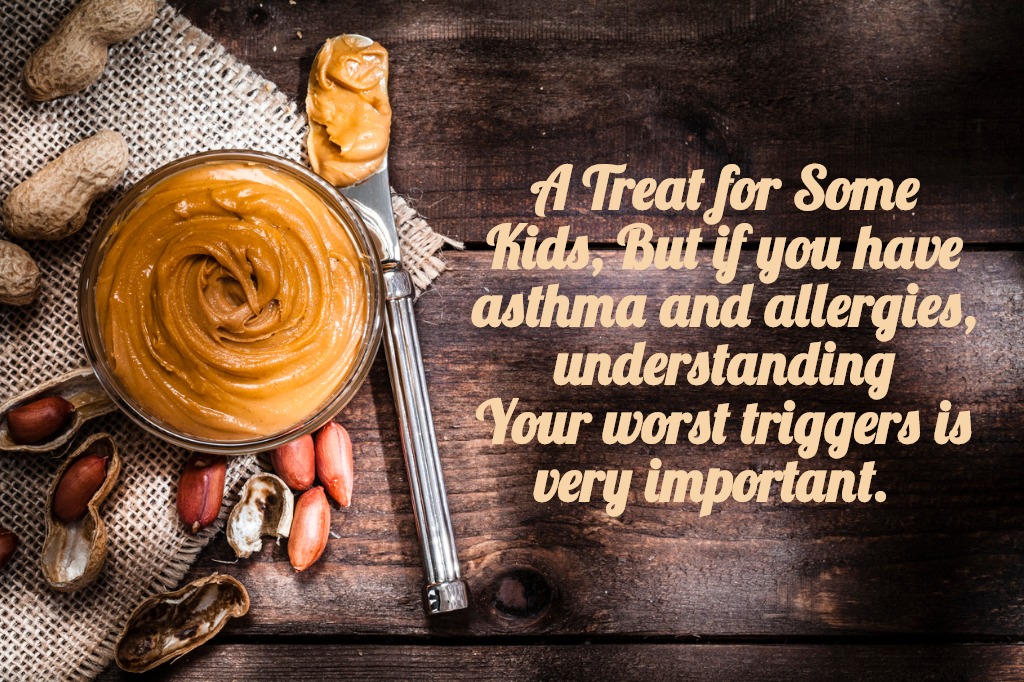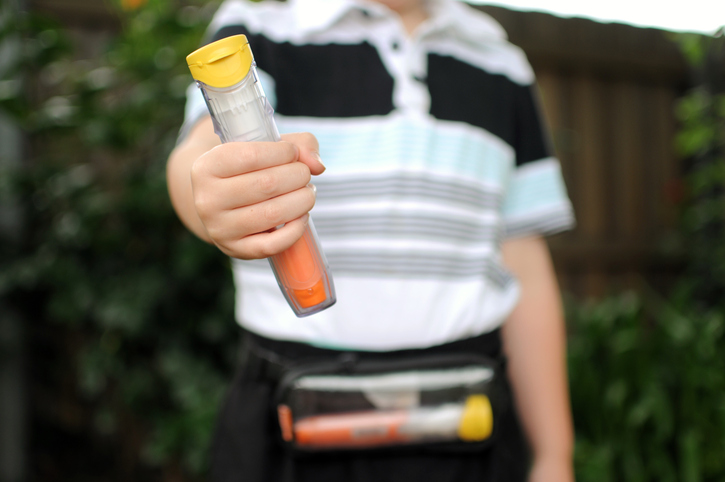Wheezing was never on a school schedule. No curriculum ever centered on wheezing as one of the required subjects. However, for this blog writer, asthma was a major part of my school experience.

For me and many others like me, wheezing belonged right up there with the other famous primary subjects. Yes, my first learning experiences were reading, writing, arithmetic and wheezing.
Summer vacation is almost over. And the starting dates for the new school year are just around the corner. So, we thought this would be a great time to remind parents and care-givers to prepare for asthmatic children. As school begins, they will face many triggers and challenges.
Asthma Symptoms Go Viral in the Fall
Did you know that during the fall months, we see an increase in the number of children who must visit the emergency room due to their asthma? Our heading above really does not mean going viral the way a U-tube video goes viral. All witticisms aside, respiratory and viral infection season is on the way. And some of the symptoms like difficulty breathing, choking, and wheezing can be very scary.
And as you, a parent or caregiver for an asthmatic child, know, “Asthma symptoms are also more likely to occur because of the rise in the incidence of respiratory and viral infections during the fall season.”
The Facts behind the Your Child’s Wheeze
We have a special term for people such as this writer: “Persistent.” The CDC has done some research about children

FLASS urges you to be sure your child knows how administer his or her own asthma medication. Proper use of inhalers must be carefully reviewed. Give your child the power to stop the wheezing!
with persistent asthma. Persistent Severity “includes people who are on long-term control medications and people with uncontrolled asthma.” (The classification of people in the next group have a condition termed intermittent, meaning “not well-controlled or very poorly controlled.” The latter group “are not on long-term control medication.”)
Asthma In the Schoolhouse
We only tell you about this so you will understand the following CDC statistic: Almost 60% of children with current asthma actually have persistent asthma.
Likewise, 40% of those diagnosed have intermittent asthma.In one study, a group of researchers proved that these two types of asthma varied by state during the years 2006-2010.The research scientists could not figure out a specific geographic pattern. However, they did see some interesting numbers:
1. Intermittent asthma prevalence spread from 25.6% in Mississippi to 55.0% in Oregon.
2. Persistent asthma prevalence ranged from 45.0% in Oregon to 74.4% in Mississippi.
This sounds a little bit like it craves an analysis of wind patterns and air-born pollen or air pollution. Be that as it may, however, the numbers still indicate the involvement of a large number of children with asthma. That’s our important point for this blog,
A FLASS Back-To-School-with-Asthma-Cool List:

Medicine and the Right Equipment Can Make All the Difference When Breathing is at Stake.
We think it’s time to share a few hints for harried parents who are preparing children to go back to school with their puffers in their pockets and confidence in their step.
We don’t pretend these tips are original. On the contrary, these pieces of advice are time-tested by the American Lung Association, the CDC and the National Asthma Education and Prevention Program (NAEPP.)
Tip Number 1: Up-date The Medications (Asthma attacks including wheezing, etc.)
For me, as I grew up, “back-to-school supplies” not only meant gathering up new asthma supplies, but also throwing away outdated medication. My Mom dutifully threw away the slightly discolored vials of unused epinephrine. Although money was tight, she never mentioned the expense.

Armed against asthma! Back to School Activities sometimes mean carrying the epi-pen.
You see, she was glad I had not used it because that meant I had not endured a really bad attack in several months.
I might be giving away my age here, but I blessed the day I got my first Epi-pen.
Before the days of the epi-pen, I had a love-hate relationship with the little pink case that held my syringe and vials. But I knew what to do if a wasp stung me on the playground. (And sure enough, one day a wasp did sting me in that very place. But that is another story and perhaps another blog.)
This tip includes checking all the asthma equipment your child needs. The collection might include a peak flow meter as well as rescue medications. You do not have to go as far as my mother did, but here’s part of my asthma story:
A Real Life Asthma Adventure
In addition to extra Benadryl and a spare inhaler, my mom also included a tightly folded plastic, zippered cosmetics bag, gauze, a scalpel, a very odd tube and a large purple cats-eye marble.
I figured out why she packed the plastic cosmetic bag when I suffered an allergic reaction in my eyes as well as my chest at a school picnic. Mom dumped ice in it and gently placed it over my swollen eyes.
Without missing a beat, she poked a Benadryl between my lips. Then she handed me the rescue inhaler. And she warned me not to be a baby. At that time I was 9 years old, and my mom, an R.N., was the part-time school nurse and a full-time operating room supervisor.
I was a senior in high school before I figured out the scalpel, the gauze, and the very odd tube were a tracheotomy set-up. But I never did figure out the purple cats-eye marble.
Number 2 Tip: Look Over Your Child’s FLASS Asthma Action Plan.
My childhood asthma adventures happened long before the term “Asthma Action Plan” existed. At Florida Lung,

Asthma supplies and an asthma action plan are Back to School supplies.
Asthma, and Sleep Specialists, our healthcare providers believe in an Asthma Action Plan. This is simply a detailed written plan of your child’s asthma symptoms, his or her medications, and specific symptoms. In addition, this paper also describes your child’s physical activity limitations.
Make a few Notes for the school : You should also write out an explanation of what course of action should be taken if your child does not respond to their regular medications.
- This means writing down emergency phone numbers of the child’s doctor.
- Also note your phone numbers at work and those of any caregivers’ who might be in charge of your child after school.

Be Sure the School Knows Who to Call in an Emergency. It’s Even More Important Than That Special Teddy Bear.
- The American Lung Association states, “Use your child’s yearly check-up or school physicals to create or revise an Asthma Action Plan.
- This is an excellent time to assess asthma control, adjust medicines as necessary, and get prescriptions for back-up medications.”
Obviously, this tip is all about communication, which can help control the panic element of an asthma attack.
My mother never let me fear my asthma. She instilled a cool matter-of-fact philosophy about my asthma that led me to accept it, deal with it, and get on with life.
Number 3 Tip: Take a Little Field Trip.
FLASS advises you to visit the school and take a copy of your child’s Asthma Action Plan with you.
- Do not be shy.
- And do not rely on records they might have from previous years.
- Reach out to the school and make sure they really know how to contact you in case of emergency. In fact, make sure they are prepared to handle an asthma emergency.
As summer begins to close, we hank you for reading our blog during this busy time. FLASS will continue with part II and more tips to protect your school child with asthma, in our next blog article. The safety of your children’s learning environment is dear to our hearts here at Florida, Lung Asthma and Sleep Specialists. Next week we bring you more information and news you can use, plus more of the wheezing back-to-school asthma adventures of the FLASS blogger.


